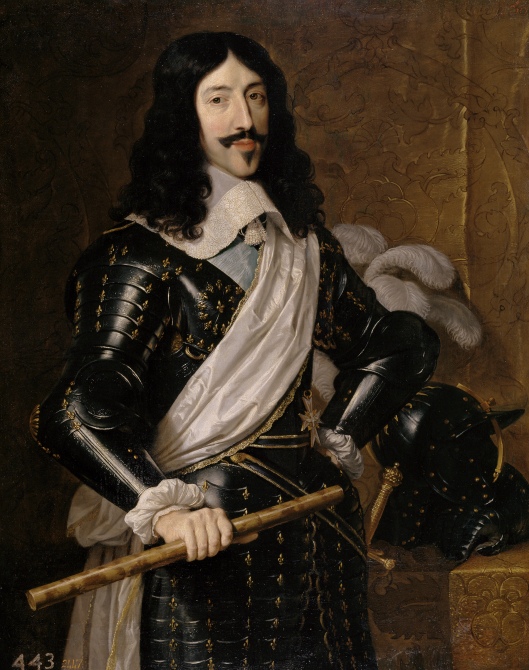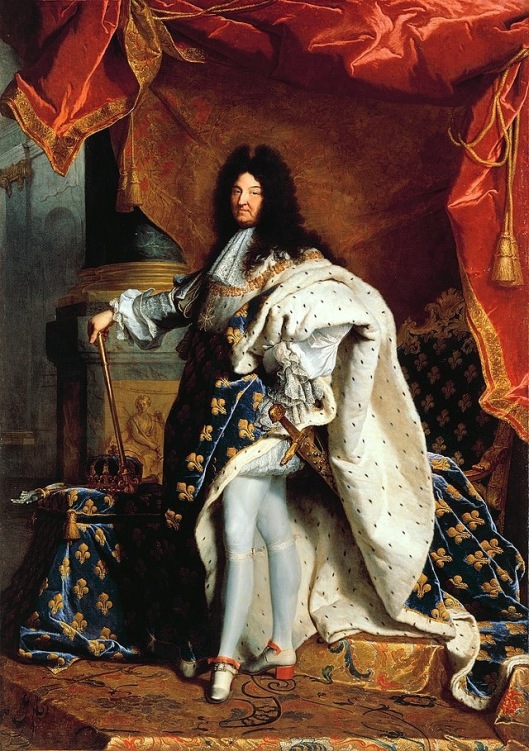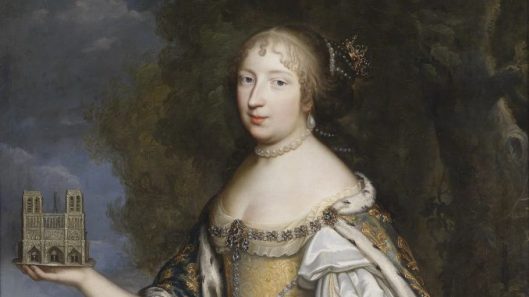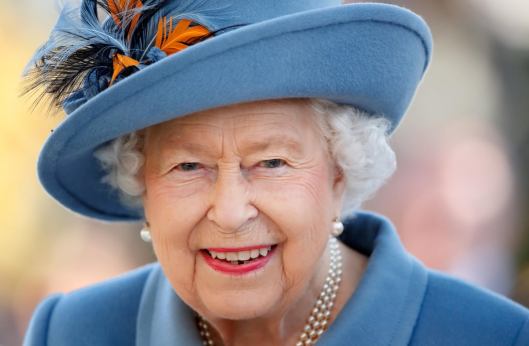Tags
Anne of Austria, Antoine de Bourbon, Archduchess Margaret of Austria, duc de Vendôme, Edict of Nantes, Estates General, Jeanne III d'Albret, King Henri IV of France and Navarre, King Louis XIII of France and Navarre, Marie de' Medici, Philip III of Spain, Queen of Navarre
Louis XIII (September 27, 1601 – May 14, 1643) was King of France from 1610 until his death in 1643 and King of Navarre (as Louis II) from 1610 to 1620, when the crown of Navarre was merged with the French crown.
Shortly before his ninth birthday, Louis became King of France and Navarre after his father King Henri IV was assassinated. His mother, Marie de’ Medici, acted as regent during his minority.
Mismanagement of the kingdom and ceaseless political intrigues by Marie and her Italian favourites led the young king to take power in 1617 by exiling his mother and executing her followers, including Concino Concini, the most influential Italian at the French court.
Louis XIII, taciturn and suspicious, relied heavily on his chief ministers, first Charles d’Albert, duc de Luynes and then Cardinal Richelieu, to govern the Kingdom of France. The King and the Cardinal are remembered for establishing the Académie française, and ending the revolt of the French nobility.
They systematically destroyed the castles of defiant lords, and denounced the use of private violence (dueling, carrying weapons, and maintaining private armies). By the end of the 1620s, Richelieu had established “the royal monopoly of force” as the ruling doctrine. The king’s reign was also marked by the struggles against the Huguenots and Habsburg Spain.
Early life, 1601–1610
Born at the Palace of Fontainebleau, Louis XIII was the eldest child of King Henri IV of France and Navarre and his second wife Marie de’ Medici, the sixth daughter of Francesco I de’ Medici, Grand Duke of Tuscany, and Archduchess Joanna of Austria.
Marie de’ Medici was a descendant of Lorenzo the Elder –a branch of the Medici family sometimes referred to as the ‘cadet’ branch– through his daughter Lucrezia de’ Medici, and was also a Habsburg through her mother, Archduchess Joanna of Austria, the youngest of 15 children, the youngest daughter of Ferdinand I, Holy Roman Emperor and Anna of Bohemia and Hungary.
Marie de’ Medici’s paternal grandparents were Queen Joanna of Castile Archduke Philipp of Austria , reigning Duke of Burgundy and as Felipe I, was King of Castile. Her maternal grandparents were King Vladislaus II of Bohemia, Hungary, and Croatia and Anna of Foix-Candale.
As son of the king, he was a Fils de France (“son of France”), and as the eldest son, Dauphin of France. His father, King Henri IV, was the first French king of the House of Bourbon, having succeeded his second cousin, King Henri III (1574–1589), in application of Salic law.
King Louis XIII’s paternal grandparents were Antoine de Bourbon, duc de Vendôme, and Jeanne d’Albret, Queen of Navarre. His maternal grandparents, as mentioned above, were Francesco I de’ Medici, Grand Duke of Tuscany, and Archduchess Joanna of Austria, Grand Duchess of Tuscany.
King Louis XIII of France and Navarre ascended the throne in 1610 upon the assassination of his father, and his mother Marie de’ Medici acted as his Regent. Although Louis XIII came of age at thirteen (1614), his mother did not give up her position as Regent until 1617, when he was 16.
Marie maintained most of her husband’s ministers, with the exception of Maximilien de Béthune, Duke of Sully, who was unpopular in the country. She mainly relied on Nicolas de Neufville, seigneur de Villeroy, Noël Brûlart de Sillery, and Pierre Jeannin for political advice. Marie pursued a moderate policy, confirming the Edict of Nantes.
She was not, however, able to prevent rebellion by nobles such as Prince Henri de Bourbon, Prince of Condé (1588–1646), second in line to the throne after Marie’s second surviving son Gaston, Duke of Orléans.
Condé squabbled with Marie in 1614, and briefly raised an army, but he found little support in the country, and Marie was able to raise her own army. Nevertheless, Marie agreed to call an Estates General assembly to address Condé’s grievances.
The assembly of this Estates General was delayed until Louis XIII formally came of age on his thirteenth birthday. Although his coming-of-age formally ended Marie’s Regency, she remained the de facto ruler of France. The Estates General accomplished little, spending its time discussing the relationship of France to the Papacy and the venality of offices, but reaching no resolutions.
French nobles launched a rebellion on July 2, 1620, but their forces were easily routed by royal forces at the Battle of Ponts-de-Cé on 7 August 1620. The next year Louis XIII was formally reconciled with his mother.
On November 24, 1615, Louis XIII married Anne of Austria, the eldest daughter of King Felipe III of Spain and his wife (and first cousin once removed) Archduchess Margaret of Austria, the daughter of Archduke Charles II of Inner Austria and Maria Anna of Bavaria and thus the paternal granddaughter of the Holy Roman Emperor Ferdinand I.
Anne of Austria held the titles of Infanta of Spain and of Portugal (since her father was king of Portugal as well as Spain) and Archduchess of Austria. Despite her Spanish birth, she was referred to as Anne of Austria because the rulers of Spain belonged to the senior branch of the House of Austria, known later as the House of Habsburg, a designation relatively uncommon before the 19th century.
This marriage followed a tradition of cementing military and political alliances between the Catholic powers of France and Spain with royal marriages. The tradition went back to the marriage of King Louis VII of the Franks and Infanta Constance of Castile, a daughter of King Alfonso VII of León and Berengaria of Barcelona
The marriage was only briefly happy, and the King’s duties often kept them apart. After 23 years of marriage and four stillbirths, Anne finally gave birth to a son on September 5, 1638, the future Louis XIV.
Many people regarded this birth as a miracle and, in show of gratitude to God for the long-awaited birth of an heir, his parents named him Louis-Dieudonné (“God-given”). As another sign of gratitude, according to several interpretations, seven months before his birth, France was dedicated by Louis XIII to the Virgin Mary, who, many believed, had interceded for the perceived miracle.
But the text of the dedication does not mention the royal pregnancy and birth as one of its reasons, and Louis XIII himself is said to have expressed his scepticism with regard to the miracle after his son’s birth.
In gratitude for having successfully given birth, the queen founded the Benedictine abbey of the Val-de-Grâce, for which Louis XIV laid the cornerstone of its church, an early masterpiece of French Baroque architecture.
Louis XIII was unwell during the winter of 1642–1643. He managed a few hunting trips to Versailles, but by the middle of February was mostly bedridden. From contemporary descriptions, modern historians have surmised that he suffered from extrapulmonary tuberculosis. On April 13, his chief physician informed him that his illness would be fatal. He died in Paris on May 14, 1643, the 33rd anniversary of his father’s death.
His five year-old son succeeded him as King Louis XIV of France and Navarre with his mother, Queen Anne acting as Regent.













